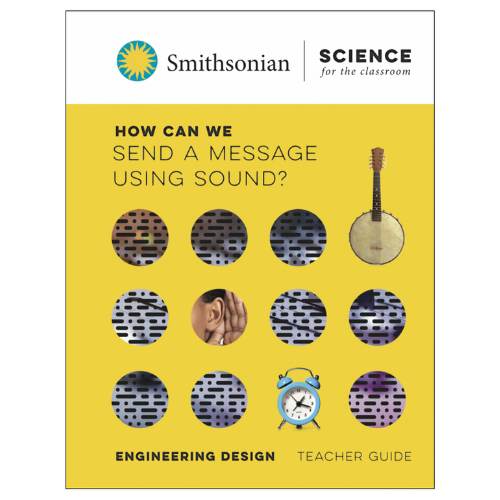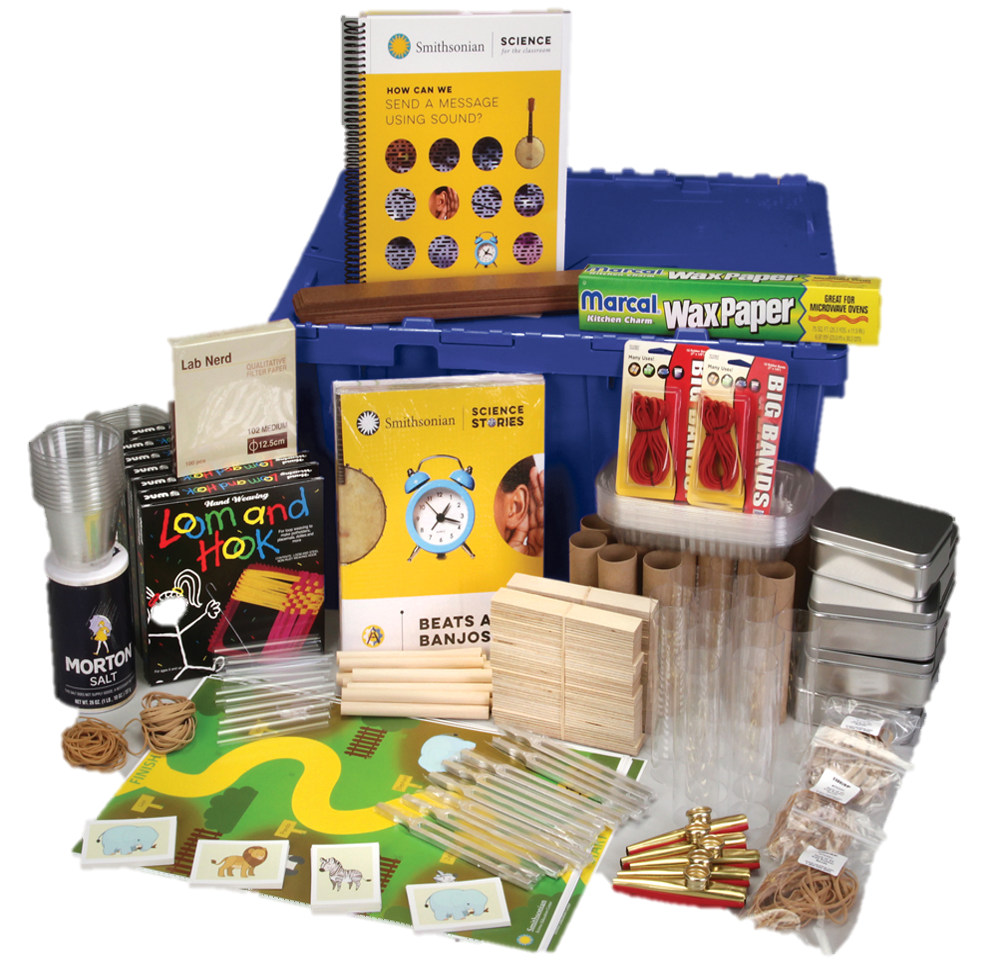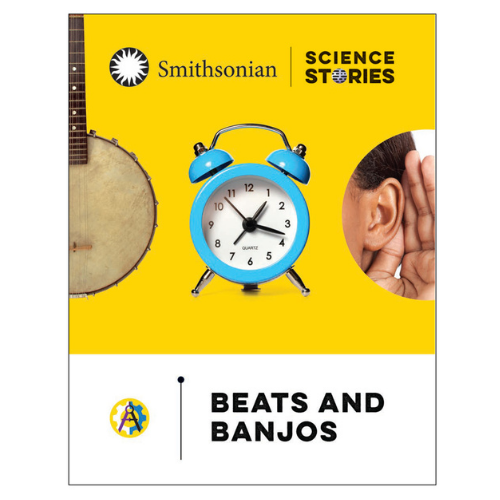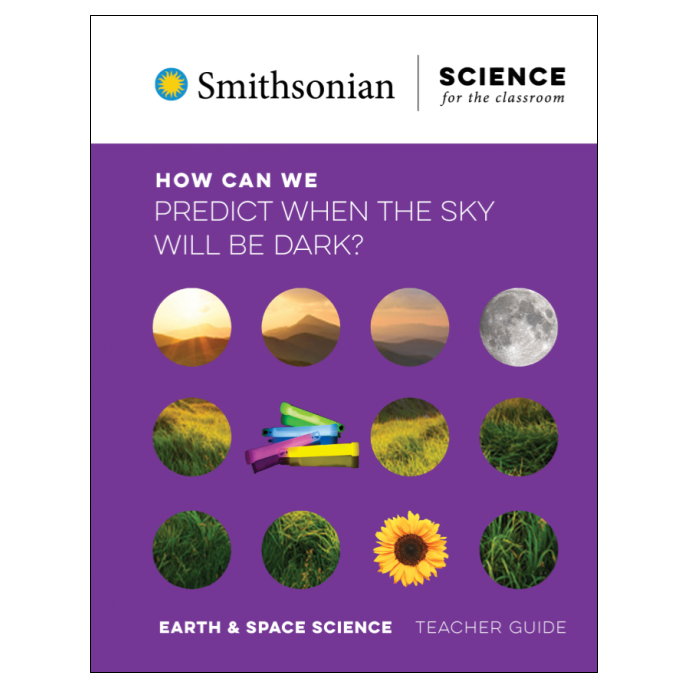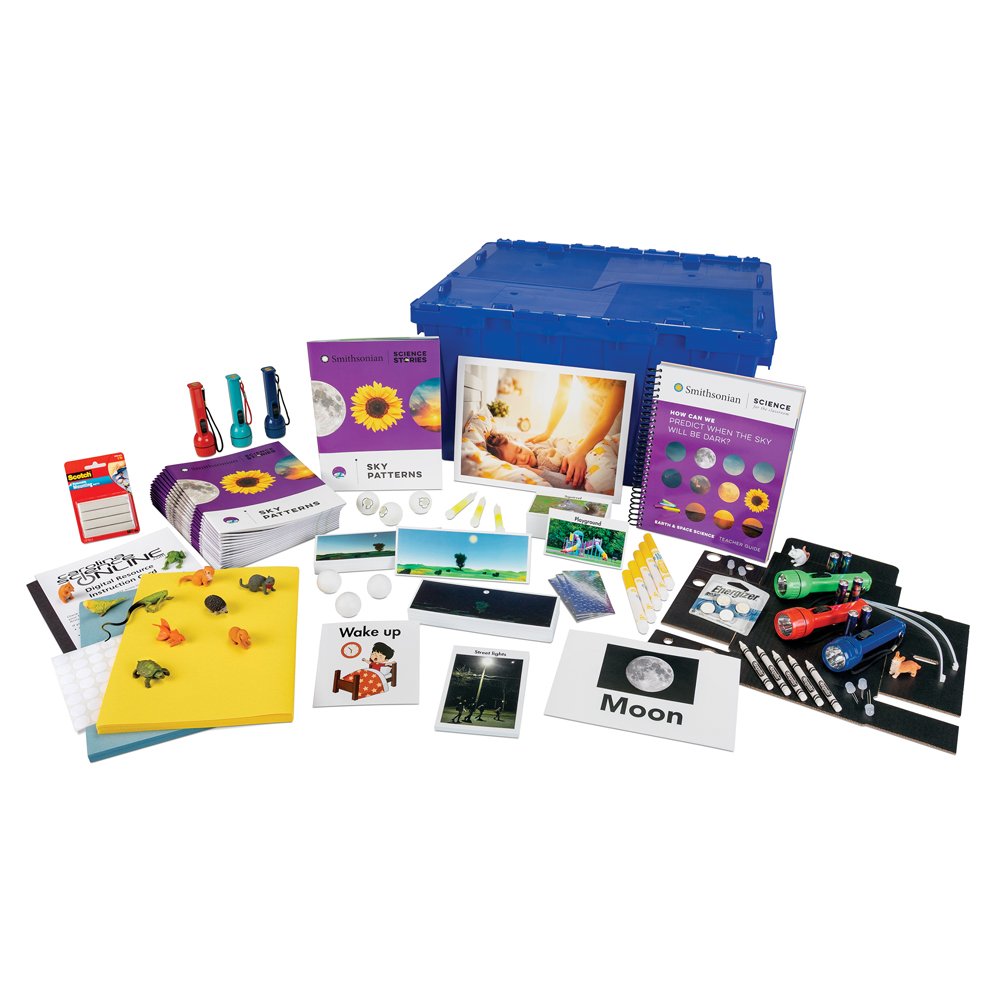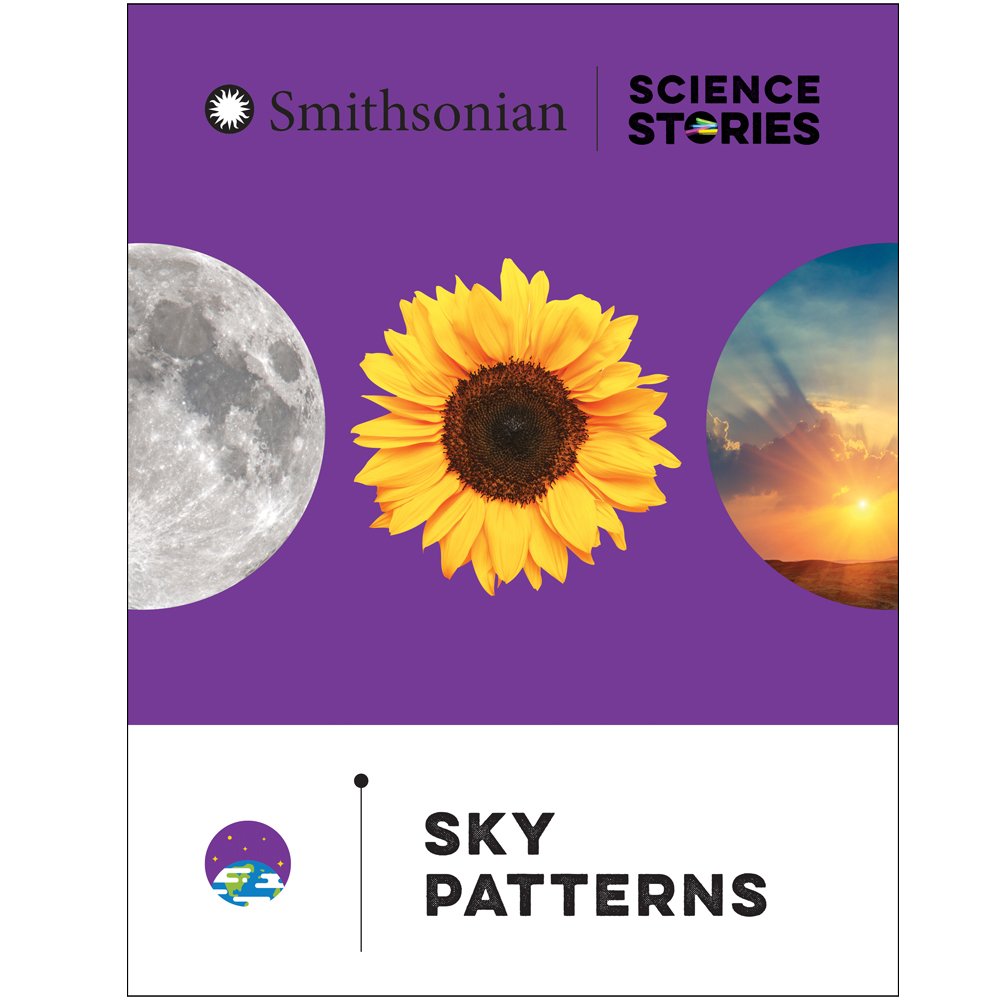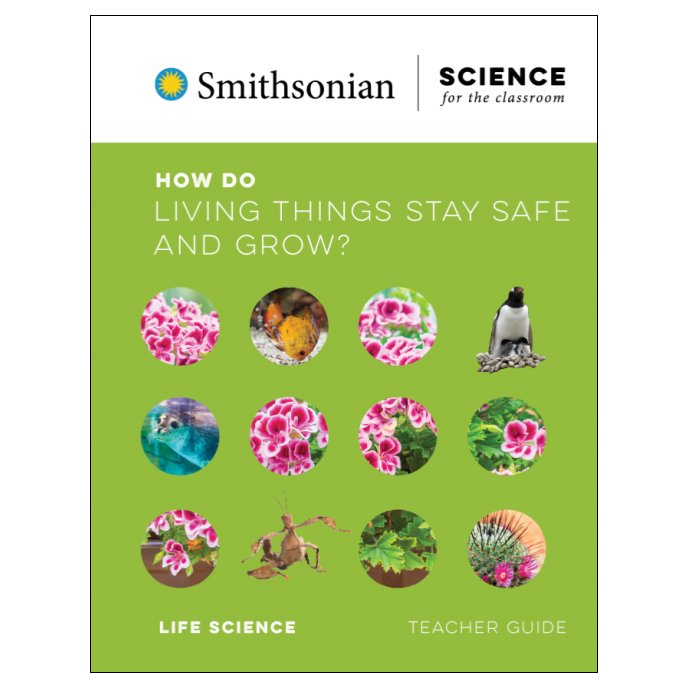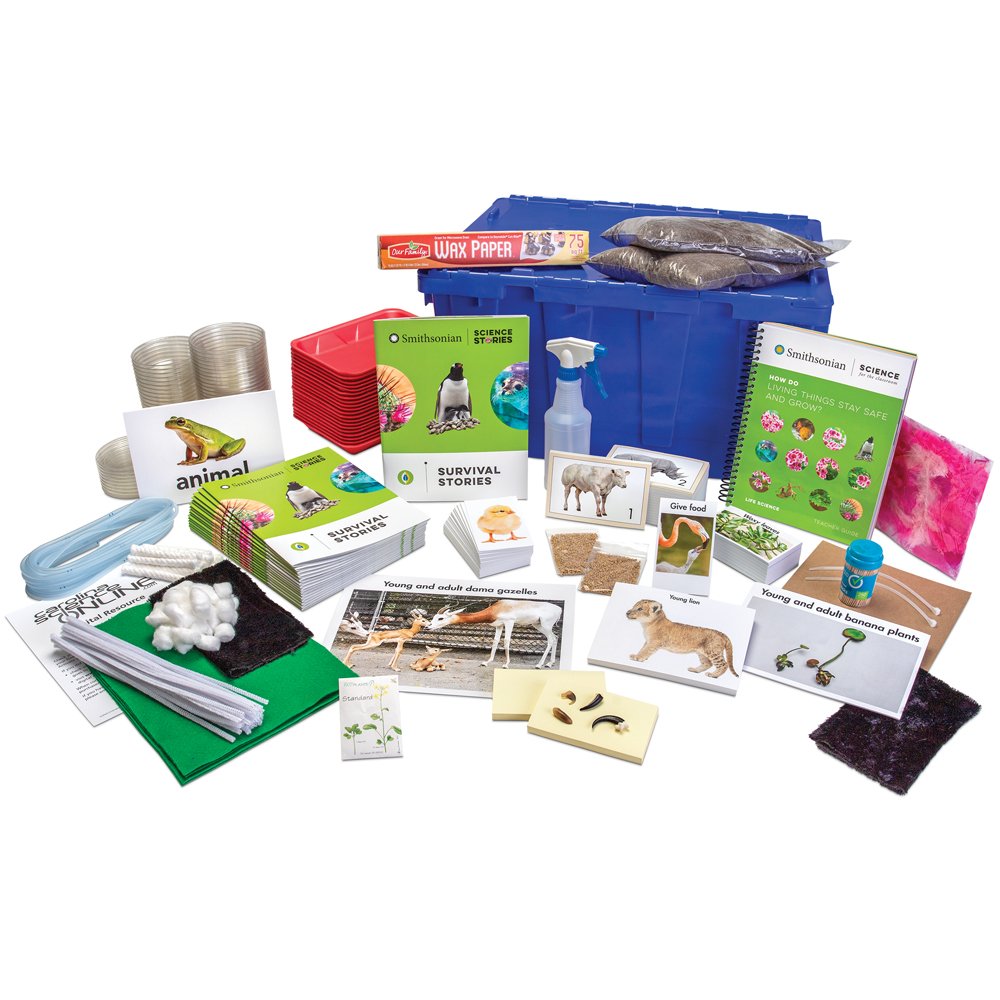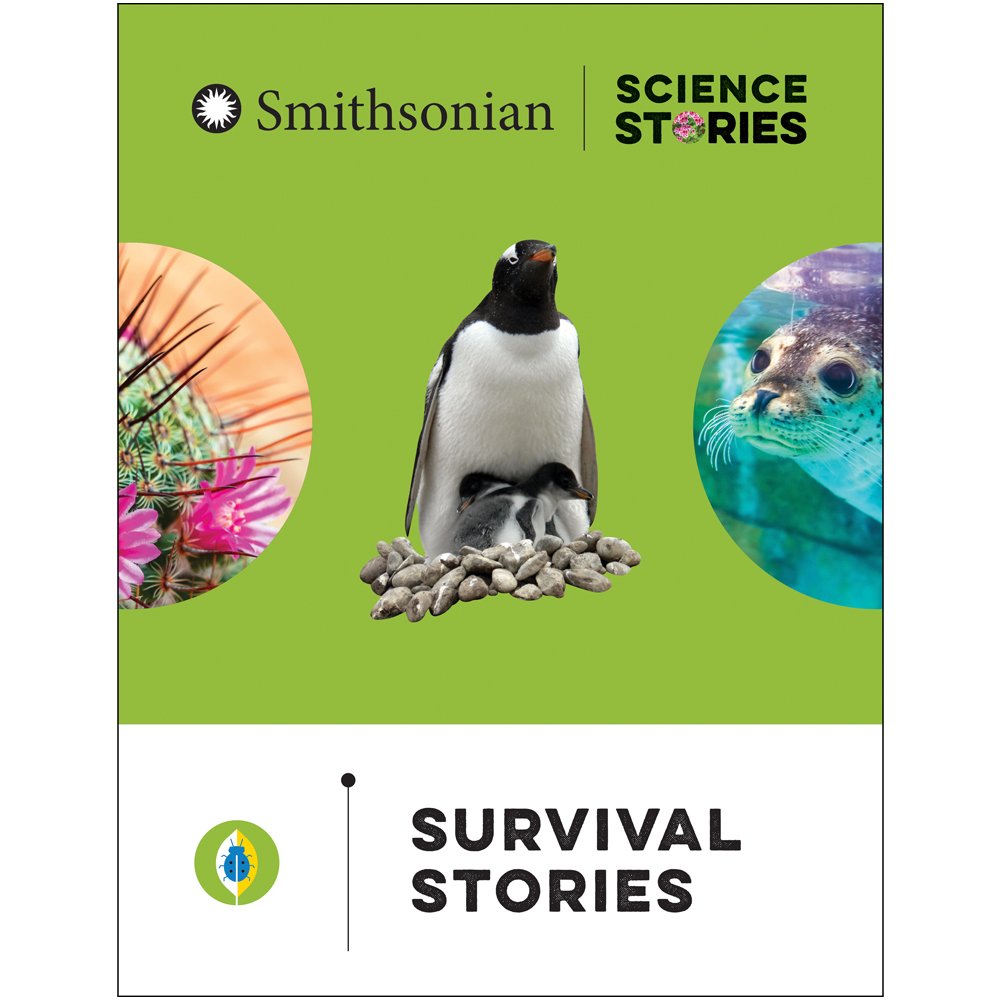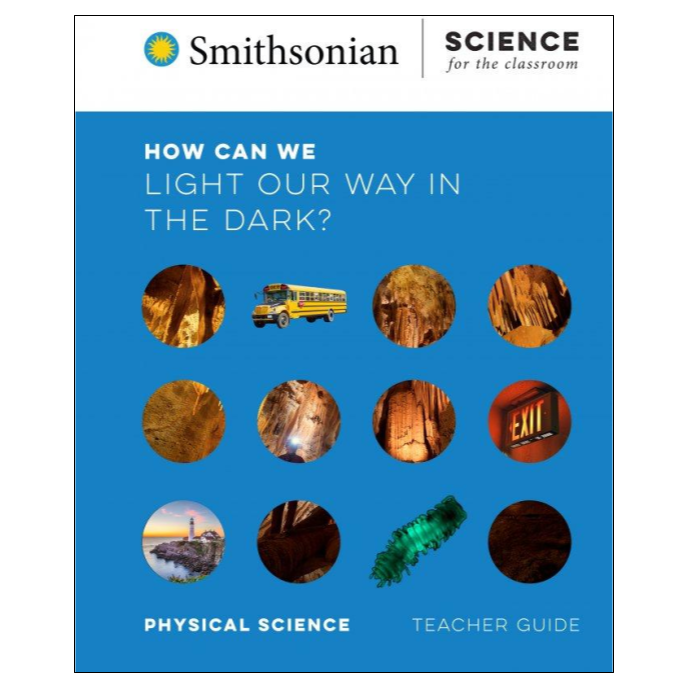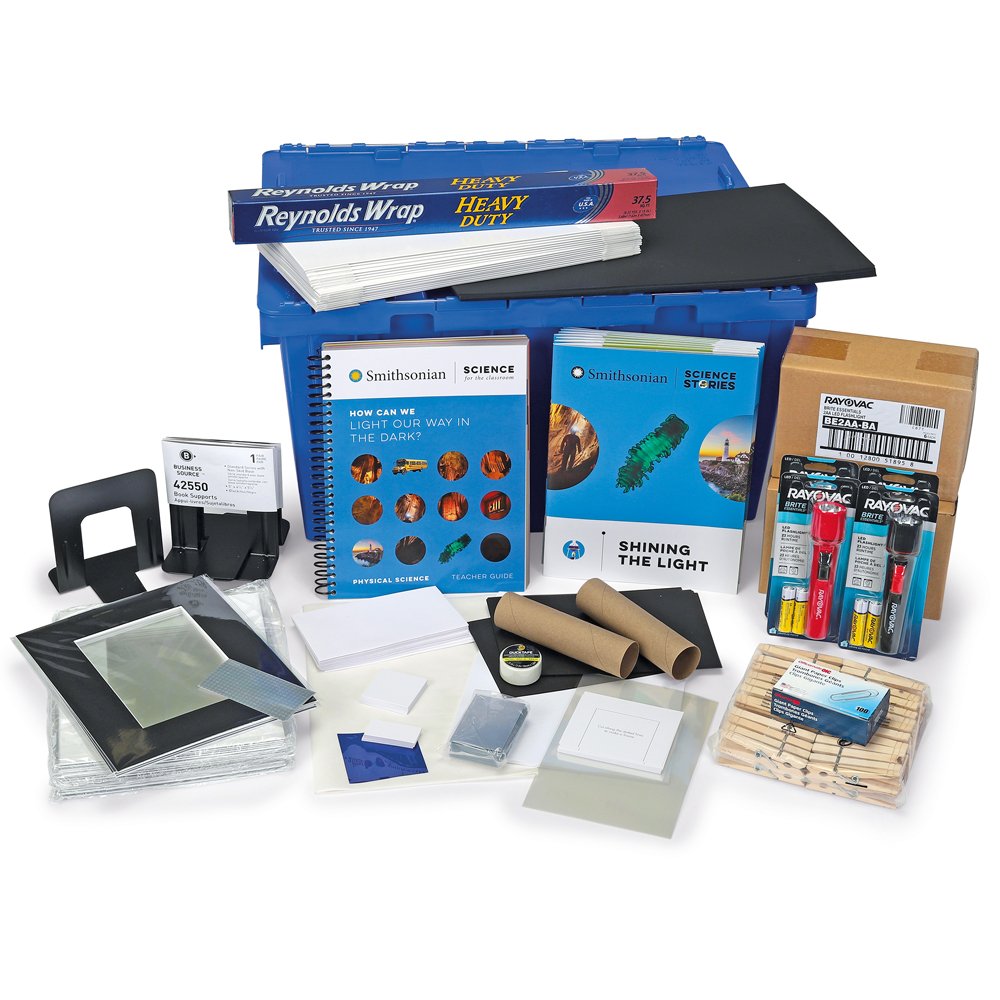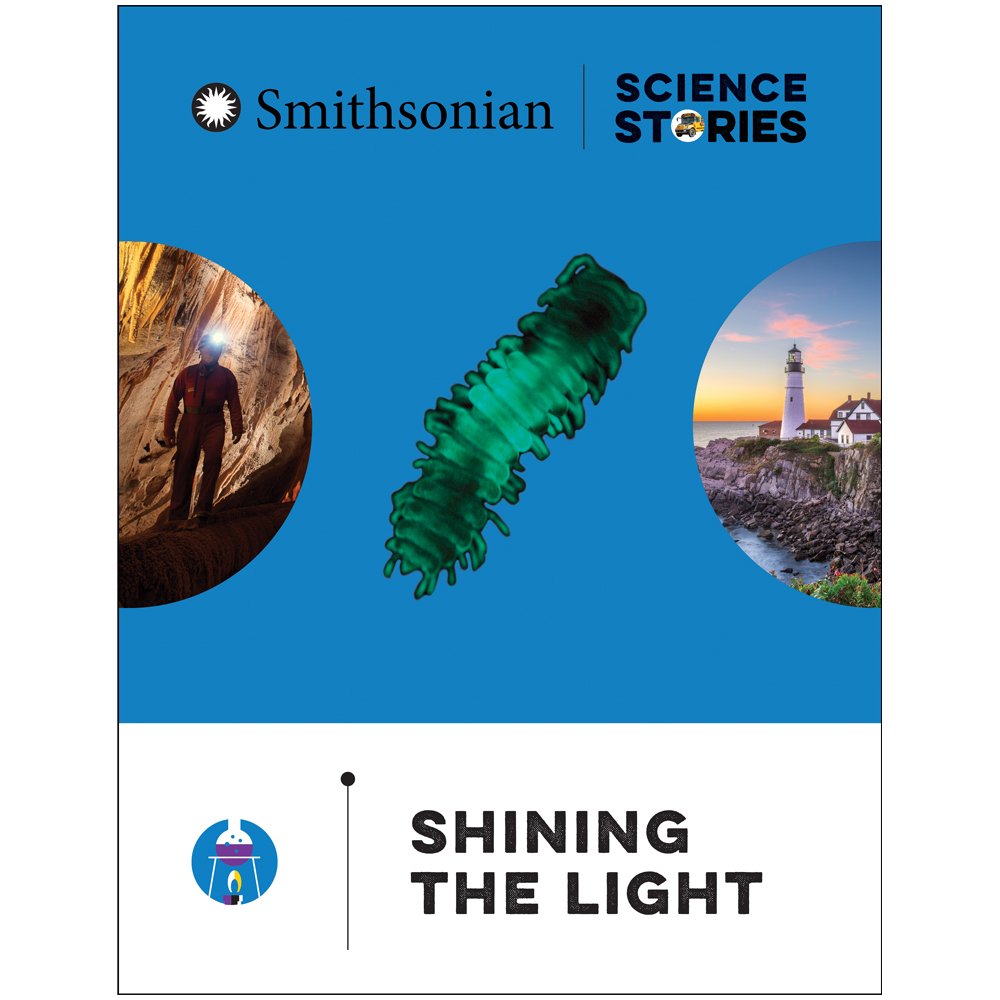EINSTEIN PROJECT CURRICULUM OPTIONS
First Grade
How Can We send a message using sound?
Engineering Design
What’s Included?
Teacher's Guide (1 spiral bound & digital)
Student Readers (12 on grade, 4 below grade, digital access)
Interactive Materials for 32 students (working in pairs)
Unit Description
10 lessons | 13 days of instruction
Sound is much more than just noise. Its many varieties can be used to make music, alert us to harm, and even send messages. How can we send a message using sound? Over the 10 lessons in the module, students use a variety of methods and media to solve this problem. Students explore different ways of sending a message and organize them by how the message is sent (light or sound) and by distance. They use a drum to send a simple message using a pattern of sounds. Students collect evidence through hands-on activities and text to build a claim that sound is caused by something vibrating. They build a model of a kazoo and use this to demonstrate that sound also causes vibration. They use a model of an eardrum to collect more evidence that sound causes vibration. They use a text to construct an explanation for how we hear. In the end-of-module design challenge, students apply what they have learned about sound and engineering to make a simple musical instrument whose sound sends a code that solves the problem of getting someone safely across a river.
Learn more in the Unit Storyline.
SINGLE KIT | $364
All materials for 1 class
ADD-ON | $154
Consumables for 1 class
How Can We Predict when the sky will be dark?
Earth & Space Science
What’s Included?
Teacher's Guide (1 spiral bound & digital)
Student Readers (12 on grade, 4 below grade, digital access)
Interactive Materials for 32 students (working in pairs)
Unit Description
10 lessons | 12 days of instruction
In 10 lessons over 12 class sessions, students observe the phenomenon of a girl in bed when the sky appears to be dark and a girl in bed when the sky appears to be bright. To begin to explain why the pictures are different, students analyze and interpret observations of the sky at different times of the day and find the pattern that the Sun is visible only during the daytime, the stars are visible only at night, and the Moon can be visible during the daytime or at night. To explain why we see the Sun only in the daytime, students investigate why we see objects at all and figure out that we see objects when light shines on them or if they give off their own light. By modeling the Moon, students figure out that we see the Moon because light shines on it. To identify the daily pattern of the Sun's motion, students observe 360-degree photographs of the sky taken throughout one day. Students plan and carry out an investigation to identify the pattern of daylight throughout the year. Students can now explain that the two pictures from the beginning may have been taken at the same time of day, but on different days of the year. Students complete a science challenge to identify the times of the year that it will be dark when kids walk to and from school in a specific town. They recommend a light source to use so objects can be seen when kids walk to school in the dark.
Learn more in the Unit Storyline.
SINGLE KIT | $306
All materials for 1 class
ADD-ON | $94
Consumables for 1 class
how do living things stay safe & grow?
Life Science
What’s Included?
Teacher's Guide (1 spiral bound & digital)
Student Readers (16)
Interactive Materials for 32 students (working in pairs)
Unit Description
10 lessons | 13 days of instruction
In 10 lessons over 13 class sessions, students explore similarities and differences between young and adult plants and animals and how behavior and external parts help living things survive. Students begin by completing a card sort activity in which they use patterns of similarities and differences among living things as evidence for their sorting. Next, students observe plants and animals to determine the patterns of similarities and differences between young and adult individuals within a species. Their evidence supports the idea that young and adult plants and animals are similar but not exactly alike. Then students engage in argument from evidence about the similarities and differences among different species of animals. Students construct an explanation about how to tell apart species of animals. Next, students obtain information about how animal behavior helps offspring survive. They apply this information in a digital simulation of parents and offspring. Students read about how the structure of external parts of plants and animals helps living things survive. They design a device that mimics the structure of a plant or animal in order to solve a simple problem. In the end-of-module science challenge, students play a card game in which they act as plants and animals trying to survive various scenarios. They communicate their choices from the game in a comic strip format.
Learn more in the Unit Storyline.
SINGLE KIT | $414
All materials for 1 class
ADD-ON | $142
Consumables for 1 class
How Can We light our way in the dark?
Physical Science
What’s Included?
Teacher's Guide (1 spiral bound & digital)
Student Readers (16)
Interactive Materials for 32 students (working in pairs)
Unit Description
10 lessons | 13 days of instruction
In 10 lessons over 13 class sessions, students gather evidence to help them explain how light can help animals, including humans, survive. They begin by considering how we can see things in dark places such as caves and investigate whether certain objects are light sources. Students plan and carry out investigations about how a beam of light interacts with transparent, translucent, and opaque materials, constructing explanations of what they observed, then describe the formation of shadows and reflection of light. They read about the structures of some animals that use light to help them survive, the structures that make up lighthouses, and the engineering problems that lighthouses are designed to solve. Students design a solution to the problem of student visibility on the way to and from school, mimicking ways that some animals reflect light. In the end-of-module science challenge, students investigate the effects of light hitting new materials to explain how one material could help people find an exit door in an emergency, helping them survive.
Learn more in the Unit Storyline.
SINGLE KIT | $293
All materials for 1 class
ADD-ON | $102
Consumables for 1 class



